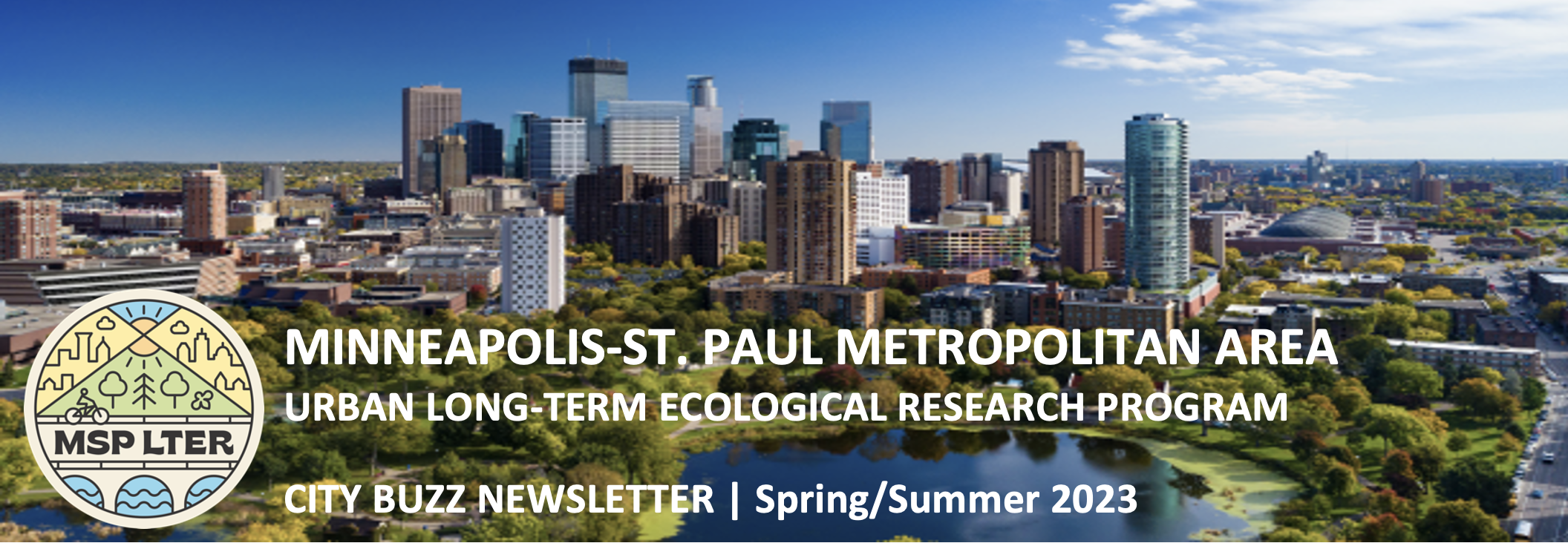
City Buzz is the semi-annual newsletter of the Minneapolis-St. Paul Metropolitan Area Urban Long-Term Ecological Research Program (MSP LTER), produced to inform interested partners and community members of our work. Sign up to receive the City Buzz newsletter here!
From the Director
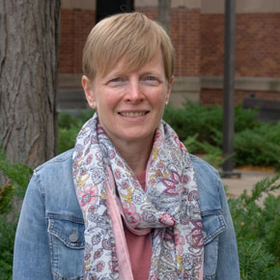
Happy summer! I hope you are all coping with the heat and air quality issues. Many of the MSP researchers have settled into a rhythm of conducting summer field research—in parks, yards, lakes, and ponds—after an energizing Summer Symposium, held at the end of May at the University of Minnesota Saint Anthony Falls Laboratory. We were excited to share our activities and findings with over 80 community partners, MSP researchers, and educators at our Symposium this year. This gathering reminded me of how incredibly grateful I am for the support we receive from our partners, including exchanging ideas, accessing research sites, and sharing data. I encourage all our partners to continue to help us understand how we can best support your efforts and priorities.
One highlight of the Summer Symposium was that MSP personnel received a sneak-peak of the Bell Museum’s Solution Studio, a new summertime makerspace focused on creativity and problem-solving, and inspired by MSP research. The Solution Studio is now open to the public (details under “Featured Event”), so head on over to the Bell Museum and check it out!
Like our annual Symposium, this issue of City Buzz brings together our community partners and researchers to reflect on their work across the Twin Cities Metropolitan Area. Specifically, the authors reflect on the integration of science and art in urban ecology—and the way each provides an important lens through which to explore the meaning of place.
- Sarah Hobbie, Director and Lead Principal Investigator
Featured Event
Bell Museum’s Solution Studio | Running June 16 - September 10, 2023 | Open Tuesday - Sunday, 10am - 4pm
From the Bell Museum: The Solution Studio at the Bell Museum is an opportunity to let your creativity run wild as you work to solve challenges inspired by cutting-edge research. We provide the materials and tools, and you bring the big ideas and a willingness to explore, create, experiment, and share! This year, the Bell Museum is drawing inspiration from the work of researchers associated with the MSP LTER. Activities allow museum-goers to explore the ecological impacts of urban contaminants, functioning of urban watersheds, and advocacy in environmental policies and practice. Stop by, explore, and connect with us!
Featured Stories
Communicating Ecological Resilience Efforts Through Art & Science – At Crosby Farm Regional Park
Interviews with Leslie Brandt and Willard Malebear, Jr.
From the MSP LTER: Consistent with this issue’s theme of collaboration through synthesizing science and art, below are two interviews—one with Leslie Brandt, MSP LTER Researcher and Supervisory Climate Adaptation Specialist at the US Forest Service, and the other with Willard Malebear, Jr., a local Indigenous artist. Here, Leslie and Willard share their unique approaches to collaboration related to the Adaptation Silviculture for Climate Change (ASCC) study at Crosby Farm Regional Park (Crosby), where MSP LTER researchers and other scientists are addressing our project’s research question around urban forest resilience in the face of climate change and pests and pathogens. Through this collaboration, Willard created artwork for informational signs that depict the different silviculture treatments included in the ASCC experiment. Images of Willard’s artwork and more information about the study can be found here and in the article below. The signs are in place at the Crosby research site.
This interview has been edited for length and clarity.
Q & A with Leslie Brandt, MSP LTER Researcher and Supervisory Climate Adaptation Specialist at the US Forest Service
Can you describe the ASCC tree canopy research at Crosby?
Our project tests three alternative strategies to adapting forest management to climate change in an urban floodplain forest. This area lost substantial canopy due to emerald ash borer, and trees are not regenerating at the site. There are three treatments: resistance, resilience, and transition — and a control. These are set up in six replicates, each 1/10th acre plots (24 plots total). The Resistance treatment is planted with a species composition similar to what had been there historically (minus the ash). The Resilience treatment adds more species from floodplains in Minnesota/northern Iowa. The Transition treatment is where we are planting flood-adapted trees from the southern Midwest that may be better adapted to future conditions.
What makes the Crosby site unique?
It is the first urban site in the ASCC Network. The park itself is unique as the largest natural park in St. Paul and is at the confluence of the Minnesota and Mississippi Rivers. This area, Bdote, has special cultural significance to the Dakota people.
What does inclusive, community-engaged research mean to you? What role has it played in ASCC and the Crosby site?
This project was co-designed by researchers and managers from dozens of organizations. A core team from the University of Minnesota, Mississippi Park Connection (MPC), the Park Service, US Forest Service, and City of St. Paul work together to manage the site and collect data. We also engage the broader community as volunteer scientists and stewards of the project.
How did the project engage Willard Malebear, Jr. for the poster design and folks at Wakaŋ Tipi Awaŋyaŋkapi (formerly the Lower Phalen Creek Project) for the interpretative messages?
MPC has been collaborating with [Wakaŋ Tipi Awaŋyaŋkapi] on multiple projects of mutual interest. They collaboratively worked on the sign design for the project. They reached out to students at North Hennepin Community College who were in a graphic design course to see if anyone was interested in the project, and Willard happened to be a student there and expressed interest. It was an obvious fit.
How can the public get involved?
You can learn about available opportunities on our volunteer page or email Emma at [email protected] for more information.
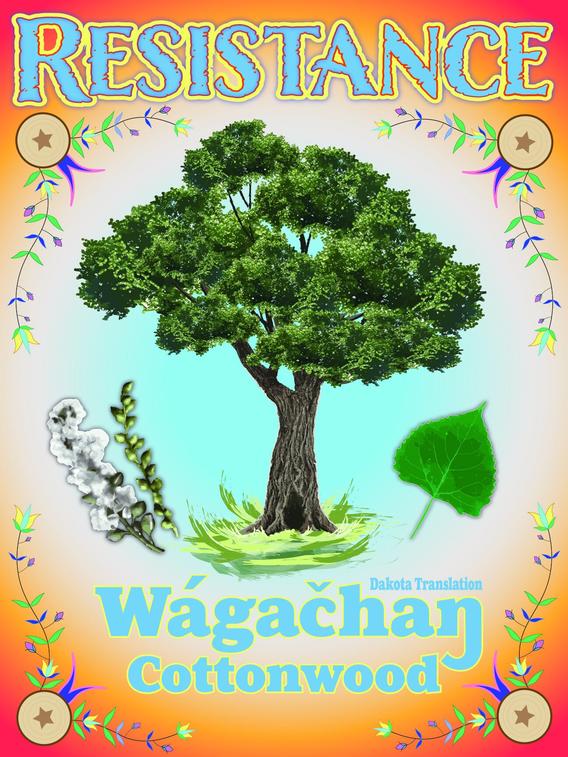
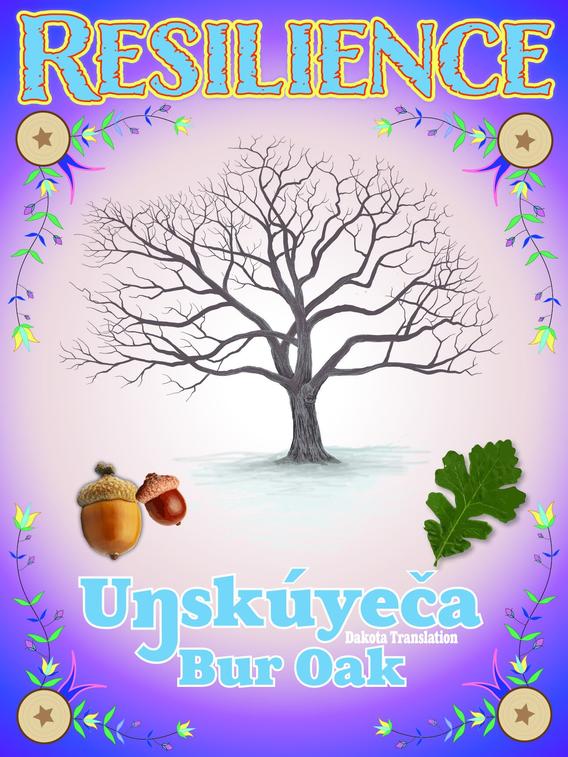
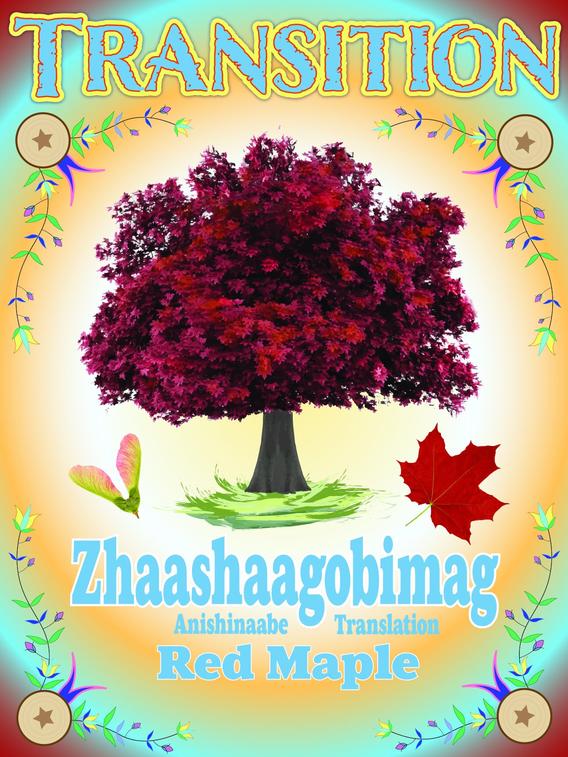
Urban Eco-Narratives
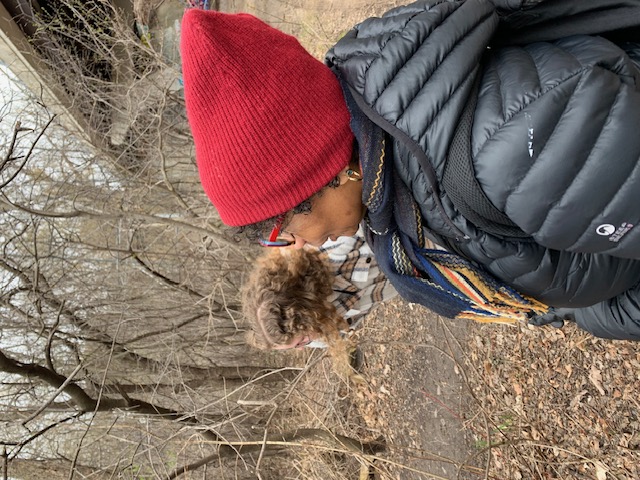
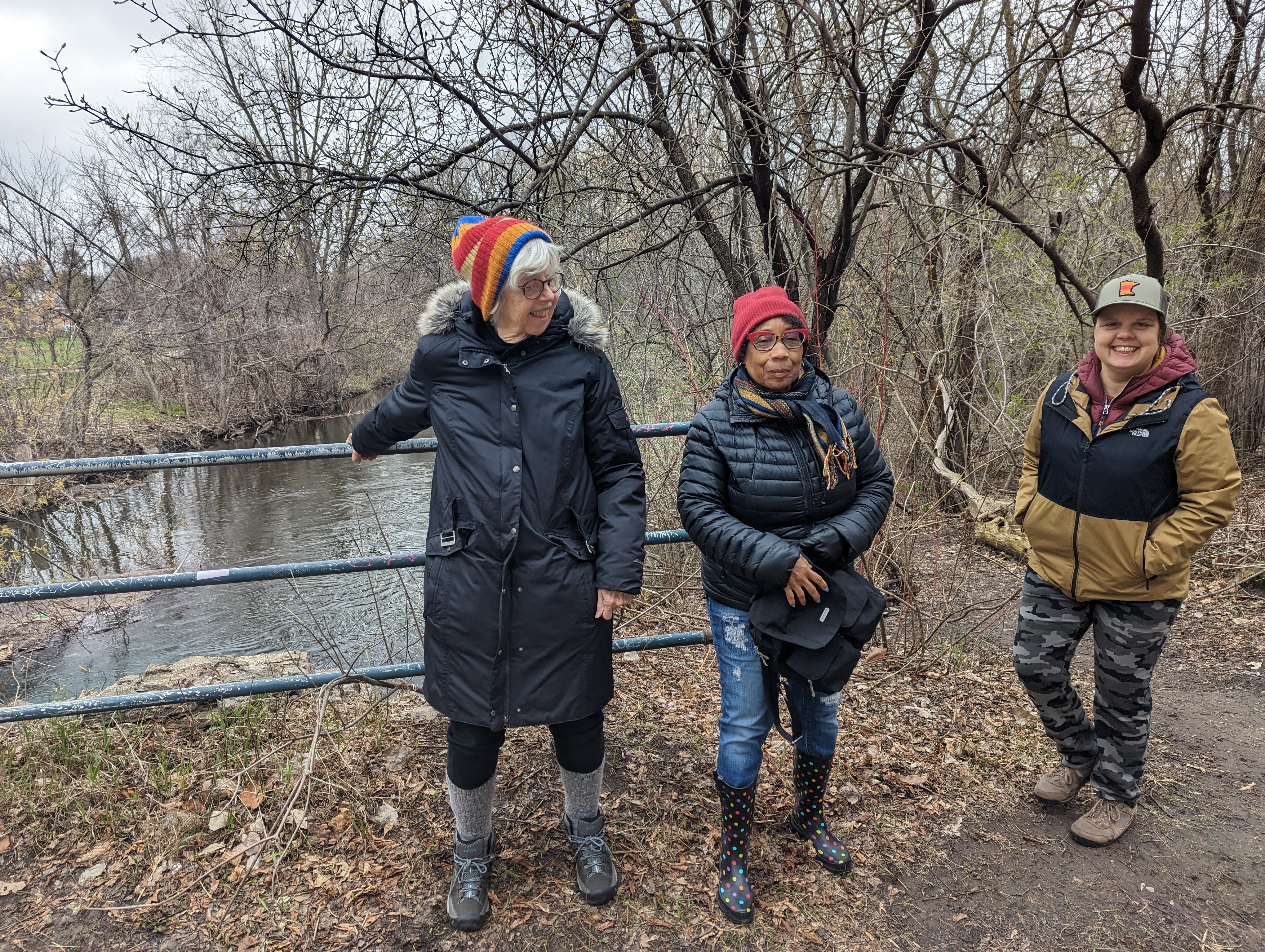
- Among other things, the MSP LTER studies how diverse residents interact with and experience the benefits and burdens of urban nature through diverse partnerships in the MSP area.
- YO MAMA! is an art-based support group that works to bridge African/African American culture and historical contributions into transformative actions and socially equitable practices for healing and building sustainable families and communities. YO MAMA! has been involved in a number of ecological and environmental initiatives. The group has hosted climate change and emergency preparedness workshops; convened conversations with North Minneapolis women about the cultural, historical, and spiritual significance of water in their lives; and collaborated with Water Bar—an organization that uses its Northeast Minneapolis storefront, as well as pop-ups around the country, to support artists and conversations around water and community—on a public education presentation at the Twin Cities EcoDistricts Summit.
- The Witness Project leads community-based writing initiatives and monthly writing workshops that create opportunities for traditionally silenced voices to be heard, thereby serving as a catalyst for cross-cultural understanding. As part of its community engagement efforts, The Witness Project recently compiled a “literary documentary” of several regional parks (see "Phase 1 Community Engagement" and "Work by Community Collaborators for Draft Initial Park Concepts - Phase 2"), interrogating the past, present, and future of the parks through a literary lens. The compilation of essays and poems was then presented to the Minneapolis Park & Rec Board as evidence of important perspectives on proposed changes to the parks in community voices.
About Us
MSP is an urban LTER program in the Twin Cities studying how urban stressors—such as climate change, pollutants, invasive species, habitat fragmentation—affect the ecological structure and functioning of urban nature, including pollinators, forests, watersheds, and lakes and streams. We also study how diverse residents interact with and experience the benefits and burdens of urban nature. Ultimately, we aim to better understand urban nature and related policies and practices, to improve environmental outcomes for all residents.
Who: 100+ researchers, educators, and community organizers from the University of Minnesota, University of St. Thomas, US Forest Service, The Nature Conservancy, and Water Bar.
What: Long-term research on ecological relationships between humans and nature in cities.
How: A six-year, $7.1 million, renewable grant from the National Science Foundation (NSF) to establish a new site as part of the US LTER Network. The grant began in March 2021 and primarily supports postdocs, students, and staff in research, education, and engagement efforts.
Where: Seven-County Twin Cities Metropolitan Area in the State of Minnesota, or Mni Sota Makoce in Dakota. What we now call the Twin Cities Metropolitan Area are the traditional, historical, and contemporary lands of the Dakota People.
To learn more, visit our website at mspurbanlter.umn.edu, or contact Sarah Hobbie (Director) at [email protected], or Meredith Keller (Program Manager) at [email protected].